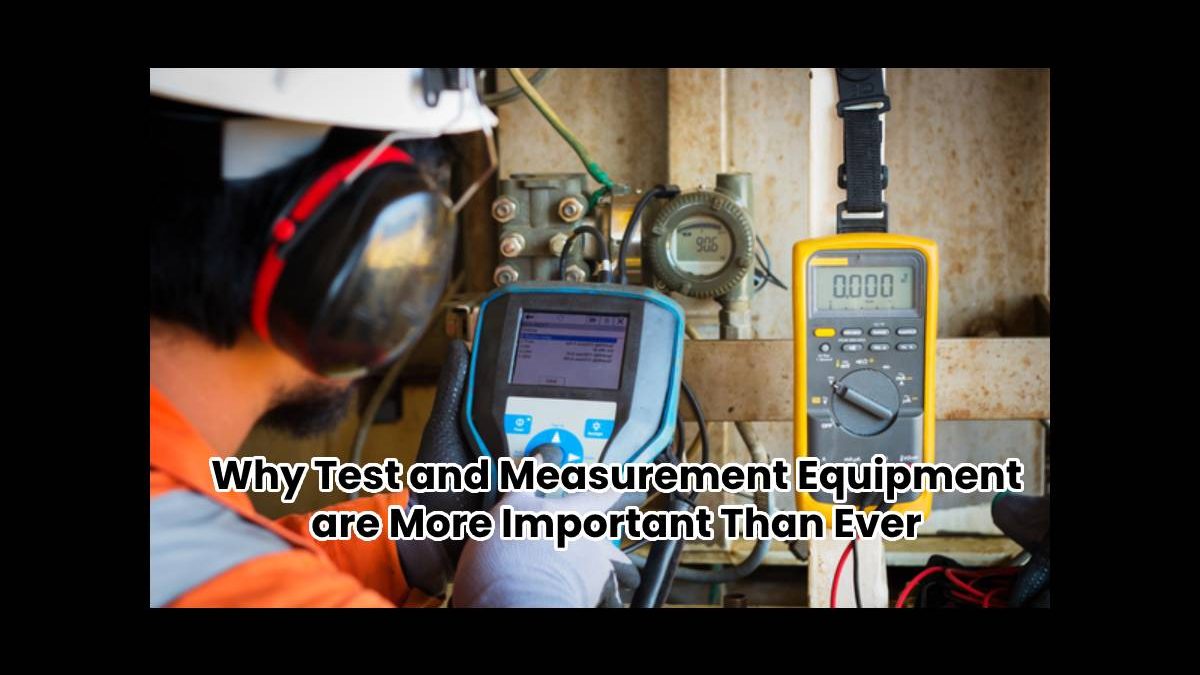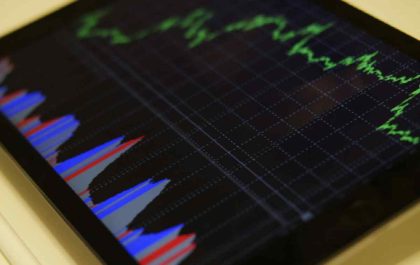The rapid pace of technological advancement is forcing test and measurement equipment to play a continuous game of catch-up.
Every industry has a different track record of adapting to new technologies, including 5G, cloud technology, and advanced analytics.
For example, cloud computing is a great tool that allows different industry professionals to collaborate on a project. But these professionals’ separate systems of communication can sometimes stall or halt progress on projects.
Test and measurement instruments are essential to bridge the gap between the possibilities and the realities of technological progress across fields like the automotive, healthcare, industrial, and IT industries. They are all different, but they need to be able to communicate with each other to innovate.
Table of Contents
What Is Test and Measurement Equipment?
Test and measurement equipment refers to any device that has any ability to detect the level of performance of electronic devices.
There are three main types of devices that are used to test and measure electrical statistics:
Parameter Devices
Parameter devices refer to any device that can measure the basic electronic capacity of something. These devices have a way of providing an accurate measurement of the current, resistance, voltage, wattage, or amplitude of an electrical device.
Common examples of this kind of device include ammeters, multimeters, voltmeters, and ohmmeters.
A voltmeter measures the voltage level between different points in an electric circuit. Voltage is important because if the voltage of an electric current is too high or too low, other devices may experience component damage and become unusable.
Batteries, for example, need to be charged with a specific voltage. Otherwise, they can fail or overload. Think of voltage as the water pressure in a pipe. A pipe can only sustain a certain amount of pressure before it bursts, but insufficient pressure means the water will never make it through the pipe at all.
Similarly, ohmmeters measure electrical resistance in a device and an ammeter measures the amount of electric current in a circuit. Multimeters combine the functions of ohmmeters, voltmeters, and ammeters into one single device.
Stimulus Signal Devices
Stimulus signal devices include pulse generators, signal generators, and power supplies. The purpose of these devices is to figure out how different electrical devices react under different circumstances by recreating those conditions.
Stimulus-Response Devices
Stimulus-response devices measure the response of a given electronic device to an outside electric stimulus.
An example of this kind of device would be an oscilloscope measuring system. Once an input signal is fired into an electronic device, an oscilloscope can use variables like time to produce a graph showing the electronic device’s various properties like frequency and amplitude.
Testing and Measurement Equipment Across Industries
Test engineers across different industries use these pieces of equipment in different ways. It’s worthwhile to examine the different uses of these devices to evaluate their true usefulness.
Automotive & Transportation
The future of the automotive industry will include the continued usage of trendy additions like wireless communication and self-driving technology.
While these innovations are largely still in the prototype and experimental stage, the technology is close to being viable. Integrating these new aspects will require increased radio frequency (RF) testing to ensure that electric signals over long distances will not interfere with those of other cars.
The spectrum of radio waves that contain things like WiFi (very necessary for self-driving cars) is limited. Different devices can cause interferences to other devices’ signals if proper care is not taken to curb malfunctioning parts.
Self-driving cars suddenly experiencing network interference due to conflicting signals – electronic malfunctions in one car’s system could be disastrous for an entire self-driving car network if proper testing is not conducted.
Healthcare
There are many beneficial trends in healthcare emerging thanks to technological advancements from the last ten years. The Internet of things (IoT) has given rise to the ability of physical objects to include sensors that can process and transmit data over communication networks.
IoT objects are coming into fashion in the healthcare industry via wearable devices that allow doctors and patients quicker access to medical data. These devices can also monitor disease progression remotely without doctor examinations.
Many of these devices are experimental, but they will need accurate information to perform their duties properly. Test and measurement equipment can supply the data in a timely and reliable fashion.
Industrial
The Industrial sector of the economy has also seen a few recent technological breakthroughs in the 2010s and earlier 2020s that will require scalable and flexible test and measurement equipment to implement widely.
Manufacturers rely more on robots and artificial intelligence (AI) to help design, construct, and transport products to different experts before they go to market.
A new additive manufacturing process has become possible thanks to 3D printing. This process allows specific and complicated designs to be realized through computer technology.
3D printing breaks down the barrier between designer and manufacturer and allows the fabrication process to be more streamlined and efficient. With this increased efficiency will come a greater need for test and measurement equipment that can respond to the sensitivity of these new technologies.
The Industrial industry is often restricted by how fast something can be scaled up, and optimization efforts often involve a lot of risk-taking. The best way to reduce the risk of these innovative machines’ malfunctions is to improve test and measurement equipment to be more reliable and easier to use, thereby increasing the industry’s ability to respond and innovation.
IT
According to the International Data Corporation (IDC), the IT industry is due for a 15%-20% market size increase over the next few years.
It is easy to see why – as cloud computing and query languages get more complicated, people will need more help integrating these systems into their business plans.
The move from traditional data storage to cloud storage is more challenging the longer someone waits, as cloud data storage is much more scalable and adaptable to market trends. Testing and measurement equipment can mitigate this challenge through streamlining process and limiting down-time.
Aerospace & Defense
Defense systems use increasingly complex networks of satellites, algorithms, and data analysis formulas to function.
With this increased demand for complicated electronics, scalable test equipment will need to be developed to ensure high performance from every electronic component and part of a defense system.
After the most recent economic downturn, analysts predict a considerable upturn in these industries in the near future.
Why Test and Measurement Equipment is Important
As each of these different industries start to scale up in production and service thanks to new electronic technological advancements, test and measuring equipment will be crucial in ensuring everything goes smoothly.
These industries will increasingly rely on sensitive electronic devices that can produce disastrous industry-wide consequences if they fail.
Because of the massive scale of electronic component production, there will be more chances for mistakes, defective components, and external disturbances.
Testing equipment will need to become more mobile, more accessible, and more accurate to keep up with the demands of a scaling economy and industry.
There are so many ways for things to go wrong. Testing is necessary to identify the degradation of critical electronic industry infrastructures to make sure they don’t succumb to disturbances from heat, short circuits, fibrations, and other factors related to a changing environment.
Any analysis of these risk factors and accurate information regarding electronic components will go a long way toward preventing critical faults and effects (and the accompanying fallout).
Test and measurement equipment can also play a key role in identifying errors and risks in electronic systems that cause them to perform ineffectively. The bottleneck to industry change is reliability. Test and measurement equipment is key to driving growth in sectors once consistent performance is achievable.
FAQs
What is commonly used in testing electrical components in North America?
The most common devices used to test electrical components are voltmeters, ohmmeters, ammeters, multimeters, and LCR meters.
Each can measure voltage, resistance, current, inductance, and capacitance individually or in combination. To test a stimulus, people will often use a power supply, signal, or pulse generator to send the stimulus and an oscilloscope or frequency counter to test the results of the stimulus.
Is Test and Measurement Equipment Safe?
Yes. Generally, testing and measurement equipment is safe to handle.
However, some applications of test equipment in the measurement equipment market will require calibration by a specialized electrician or technician.
It is possible to electrocute yourself by improperly using these devices if you are careless or ignorant of the proper steps.
It is also possible to start a fire through a spark or arc flash if a test is performed in improper operating conditions (or with defective parts).
Many people use test and measure equipment every day, but it is essential to keep in mind that they can be dangerous if not used properly.
Is the test and measurement equipment market growing?
Yes. Studies show that due to the rise of sensitive electronic devices in different sectors and industries, the compound annual growth rate of the test of the measurement equipment market is due to increase by 4.30%.
This means that the market is expected to double (or even triple) by 2029. The demand from automotive, transportation, defense, IT, education, industrial, and healthcare sectors will be the driving force behind this market expansion.
Final Thoughts
Test and measurement equipment are a vital part of many industries, and for a good reason.
As each sector of society begins to rely more heavily on sensitive electronic devices, applications, data, and instruments, it becomes more important than ever to make sure these devices are safe and as accurate as they can be. A software like SystemLink can help automate processes, manage projects and teams, and keep communication flowing so that everyday tasks go smoothly.
Author Bio
Daniel Jackson
Community Manager
Daniel is a community manager for NI (formerly National Instruments), where they create the tools needed for companies to Engineer Ambitiously™. His current interests are at the intersection of software engineering and DevOps. Outside of work, he is a marathon runner and is working on his first novel.
Related posts
Recent Posts
Navigating the Stock Market in the Digital Age
Investing and trading stocks is one of the most popular forms of trading in the industry. This is the process…
GameStop Near Me Oregon, United States
GameStop Near Me Oregon, United States Are you looking for a GameStop near you? Don’t worry—you’ve found the right post….



